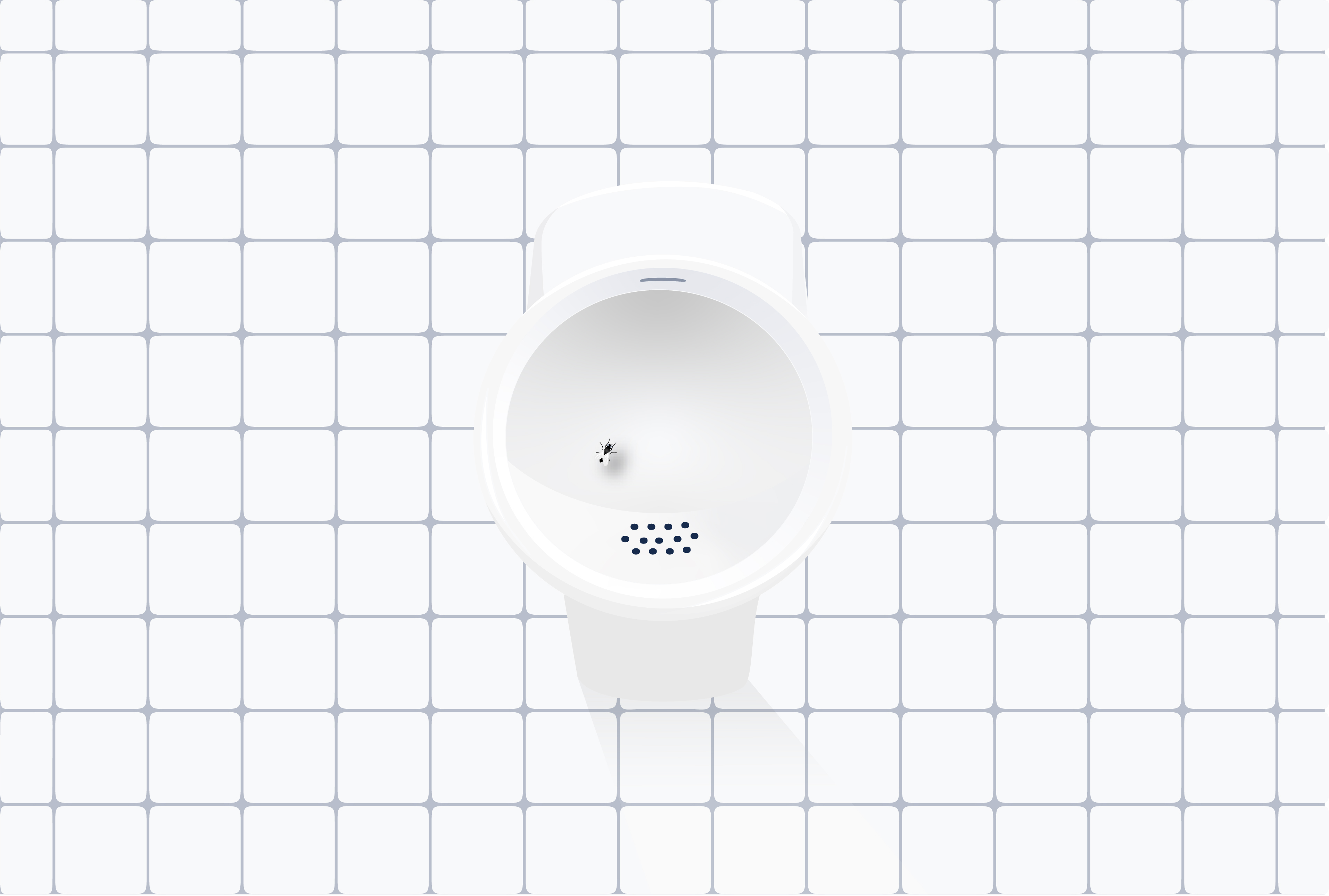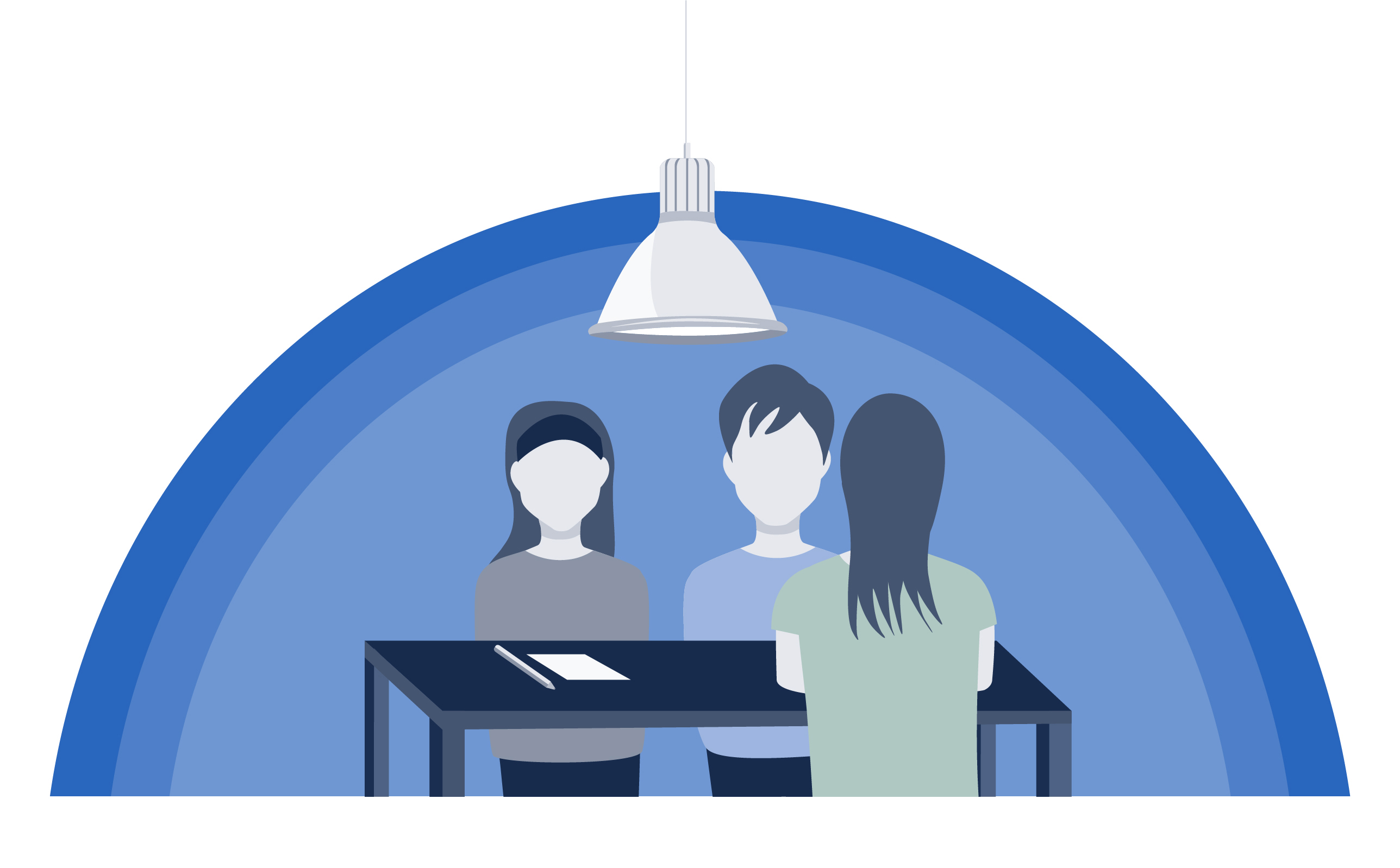
Behavioral design - psychology that changes thoughts, feelings and actions
What do the toilets at Amsterdam Airport Schiphol have in common with pendant light fittings in Danish primary schools? Both are design initiatives intended to subconsciously bring out the best in people.
Research conducted by behavioural economists has demonstrated that individuals faced with complex decision-making situations – for example, choosing where to invest their savings, stopping smoking or applying for a tax rebate – often make irrational decisions such as saving too little or too much, continuing to smoke or failing to apply for a rebate to which they are entitled.
Many people will have heard of the concept of nudging, which in a behavioural context refers to steering an individual’s behaviour in a given, desired direction; influencing their choices without removing other alternatives. This term gained popularity in 2008, when coined in a book by Cass R. Sunstein and Richard H. Thaler . In 2017, the latter was awarded the Sveriges Riksbank Prize in Economic Sciences in Memory of Alfred Nobel for his contribution to behavioural economics.
Based on this understanding of the irrationality of human behaviour, nudging can act as an instrument for influencing an individual’s behaviour and choices. Behavioural economics gave rise to the field of behavioural design, in which insights from behavioural sciences are applied to influence the decisions we make by implementing designs that make it easier for people to choose the desired behaviour. Behavioural design theory combines research in the fields of behavioural economics, psychology of learning and cognitive psychology.
 “Behavior is a function of motivation and ability. Only when these overlap can our calls to action have an effect.” Niklas Laninge, psychologist, author and entrepreneur
“Behavior is a function of motivation and ability. Only when these overlap can our calls to action have an effect.” Niklas Laninge, psychologist, author and entrepreneur
Among those with a professional interest in behavioural design and its mechanisms is Stockholm-based psychologist Niklas Laninge. Together with colleague Arvid Janson, Niklas has written two books about methods for altering human behaviour through the implementation of various design initiatives in their immediate environment.
According to the authors, it would pay dividends to abandon motivational initiatives in favour of making it easier to behave in the desired manner. If we are able to make the experience more frictionless, fix any bugs and create accessibility, the desired behaviour will follow automatically. For retailers, these insights are valuable in designing the shopping experience to ensure that the customer automatically makes the ‘right decision’. In a nutshell, behavioural design can be described as the knack of influencing how we make decisions.
“We are talking about invisible design. Design is not simply a matter of shapes and colours; it is experiences, it is images, it is text. It is much more than product design. Behavioural design is a part of that and it is all about asking: what can we do to influence behaviour? The point of departure is that the design should create a given type of behaviour,” says Niklas Laninge.
“This kind of psychological research has been going on to a certain extent since the 1960s, but since the turn of the century it has been steadily increasing. It involves studying what we can do to manipulate the context effect in order to achieve a given behaviour.”
Behavioural design can also have a major impact on office environments. By simplifying the design to encourage the desired behaviour – for example, creating space for creativity, a relaxation space without Wi-Fi connectivity and quiet zones for work requiring concentration – we can achieve a better work environment.
“As an employer, you must be constantly asking yourself what behaviour you want to encourage and reinforce in the workplace,” says Laninge. “By that I don’t mean proposals such as redesigning the interior more often, obviously that is unsustainable; however, it can prove effective to change the context. I see many people working to ‘disseminate knowledge’ in the belief that this leads to behavioural change, while in fact it is interior design elements (for instance lighting), design triggers, coincidence or even the path of least resistance that dictates human behaviour.”
Laninge continues: “When one thinks about the interior design of an office or public space, we are of course not buying furniture and light fixtures for their own sake, but for the purpose they serve; for example, we may currently need space for creativity or we may need peace and quiet in the office – or activity. And the idea that the same design and lighting can fulfil all of these functions isn’t something we apply to anything else in life. We make sure that we have the right preconditions for achieving our goals, which naturally requires us to use space differently.”
The point of nudging is to influence routine behaviour or to simplify choices in situations involving complex information. A number of Swedish municipalities have conducted projects that clearly utilise nudging to reduce littering, including Gothenburg and Lund. These design initiatives make use of various measures such as lighting, ground markings, signage and street furniture to successfully increase the desired behaviour among residents.
Research has also been conducted at a primary school in Aarhus, Denmark into design measures to reduce noise levels. This demonstrated that focused areas of light, with clear differences in light levels (tables with pendent lamps suspended above them) reduced noise levels and made students feel that they could focus better on their lessons .
One final tip from Laninge regarding how to approach behavioural design is that one should not underestimate the power of human curiosity.
“You have to appeal to people’s playfulness and not underestimate how much of what we do is governed by what is the easy option, rather than it being the right thing to do. But of course, we also want it to be easy to do the right thing. This means that we can ensure that people do the right thing, even if it’s for the wrong reason – for instance because it’s fun. This is an excellent principle.”
TEXT MARIA VÅRENIUS
PHOTO ANNA VUJISIC, PEXELS
Related News

Melanopic lux: lighting for education influenced by human biology
Light is essential in our daily lives, influencing our ability to see, overall well-being and performance. In educational environments, lighting quality can significantly impact students' focus, mood, and energy levels. So, how do we know what is the right amount and quality of light for this setting? Traditionally, light has been measured in lux, a unit of measurement for the intensity of light. It's used to measure how much light falls on a surface or the amount of light in a given space. One lux is the amount of light that falls on a surface that is one square meter in area when one lumen of light is spread out evenly. Recent advancements in research have unveiled the importance of melanopic lux, which goes beyond mere visibility. This measures how effectively light stimulates specific eye cells that regulate crucial non-visual functions such as sleep and alertness. In classrooms and lecture theatres, the melanopic ratio has become vital in lighting design, enabling educators to create spaces that support visual tasks and align with students' biological rhythms. In this article, we explore how lighting solutions can align with our biology, and how this helps to create optimum conditions for educational environments. The science of vision and light The human eye is a remarkable organ designed for high-resolution colour vision within a small area (approximately 2 degrees of the visual field) while relying on peripheral vision for motion detection. This dual-function system, shaped by evolution for survival, continues to influence how we perceive and interact with our surroundings. Our eyes are particularly susceptible to green and yellow light, reflecting our evolutionary adaptation to naturally lit environments. In contrast, blue light, which is chief in modern LED lighting, requires higher intensity to be perceived at the same level. Effective lighting design carefully considers brightness, timing, and distribution to support visual clarity and biological functions like mood and alertness. For example, exposure to bright light in the morning helps regulate circadian rhythms, boosting alertness and mitigating the effects of seasonal darkness. This is particularly important in educational environments, such as schools and universities, where lighting impacts mood, focus, and overall performance. Our Organic Response system provides an innovative solution tailored for these spaces. This smart lighting technology automatically optimises light levels, featuring daylight-responsive sensors and advanced occupancy detection, maintaining a balance between natural and artificial light. Doing so supports visual comfort and reduces energy consumption, making it an ideal choice for creating dynamic, efficient, and student-friendly learning environments. To further support students, well-lit spaces with minimal glare are essential for reducing eye strain and maintaining focus during extended study sessions. Adjusting light intensity and colour temperature for different tasks—such as reading, group discussions, or creative activities—enhances light's visual and non-visual effects. By integrating thoughtful lighting strategies like those offered by Organic Response, educational environments can promote healthier, more productive, and engaging learning experiences. Integrative lighting: Supporting health and well-being. Integrative lighting (also referred to as human-centred lighting) combines visual and non-visual benefits (such as emotional effects) to support biological rhythms and psychological well-being. This approach goes beyond traditional lighting solutions by considering how light impacts circadian rhythms and hormonal balance. Light exposure in the morning is critical for suppressing melatonin (the sleep hormone) and increasing cortisol (the alertness hormone). Proper timing helps align students' natural rhythms with school schedules, which often require a lot of focus. Consistent exposure to bright, cool light early in the day can enhance energy levels and cognitive performance. The melanopic ratio compares the spectral composition of a light source with daylight. Using this information, you can determine its melanopic lighting intensity. This enables the design of lighting setups that precisely meet both visual and biological lighting needs. Lighting recommendations for educational spaces Each learning environment has unique lighting needs. Libraries benefit from direct lighting on the floor, paired with ambient lighting on walls and ceilings. Vertical shelf lighting (200-300 lx) makes it easier to browse titles. Lecture halls, on the other hand, require glare-free, comfortable lighting with flexible control, ideally with pre-programmed scenarios. In auditoriums and classrooms, strong vertical lighting is crucial for clear visual communication, especially over greater distances, enhancing facial expressions and engagement. General lighting recommendations apply to all educational spaces. Our solutions meet industry standards, ensuring reading and writing areas maintain 500 lx for effective visual tasks. Using daylight-responsive sensors for luminaire rows can reduce energy consumption while maximising natural light. The number and arrangement of luminaires should be adjusted based on the room's size and function to ensure consistent illumination. The role of dynamic lighting A Double Dynamic lighting system can be a game-changer in educational environments. It allows for intensity and colour temperature adjustments to match the specific needs of activities, from quiet reading sessions to collaborative group work. Fagerhult's distinct approach to lighting means that our design is human-centric; we integrate scientific insight into light and human psychology, creating environments that support academic performance and well-being. Our focus on energy efficiency also means our advanced control systems optimise light usage while minimising energy consumption, contributing to a building’s sustainability goals. The customisable setting and flexible solutions ensure that educational environments can create tailored lighting profiles for different times of the day or specific learning activities. Long-term benefits of melanopic lighting Melanopic lighting, designed to mimic the natural light spectrum, helps regulate the circadian rhythm, which is essential for maintaining focus, energy, and emotional balance. In classrooms and study areas, proper lighting can reduce eye strain, improve sleep patterns, and enhance mood, which are critical for students' mental health and academic performance. By incorporating lighting that aligns with our biological needs, schools and universities can foster healthier, more productive learning environments,. This is particularly important during the winter months when daylight is limited. Whether through advanced tuneable white light systems, designs that maximise daylight, or energy-efficient solutions, we are dedicated to leading the way in lighting innovation for educational environments, delivering brighter futures—one classroom at a time.
The inspiration behind Nobel Week Lights: ”Light, art and technology intertwined.”
Nobel Week Lights has quickly become a beloved public celebration. During Nobel Week, Stockholm residents flock outdoors to marvel at the spectacular light installations, where contemporary lighting technology meets artistic expression. ”We aim to create a moment of gathering: around light and around something meaningful”, says Lara Szabo Greisman. Nobel Week Lights is a light festival that illuminates Stockholm during the darkest time of the year – a free cultural experience for everyone. Presented by the Nobel Prize Museum, the festival invites international and local artists, designers and students to create light artworks inspired by the Nobel Prize. The installations shed new light on the scientific discoveries, literature and peace efforts of Nobel laureates while offering a fresh perspective on the city. Fagerhult is Principal Partner of Nobel Week Lights 2024, and this year’s edition features 16 different light installations across Stockholm. The artworks can be experienced from 7–15 December, including ”The Wave”, a light installation by the art collective Vertigo, located in front of the Parliament House where visitors can walk right through the luminous wave. The Wave by Vertigo ”Light and art and creativity is incredibly intertwined because these are technologies that are constantly evolving. So part of the fun working with the artists is that they are constantly testing new technologies. And we see these incredible visual results which are based on just pure innovation”, says Lara Szabo Greisman, co-founder and producer of Nobel Week Lights. Lara Lara Szabo Greisman and Leading Lights by Les Ateliers BK The significance of light as a collective force, its ability to encapsulate life and death, joy and sorrow – indeed, the very essence of what it means to be human – makes lighting a powerful medium of artistic expression, she argues: ”The dream for the festival is that this becomes a personal experience for each and every member of the audience. A moment that they remember and cherish . A moment that they think about later and bring forward as their story of connecting with the city.”

